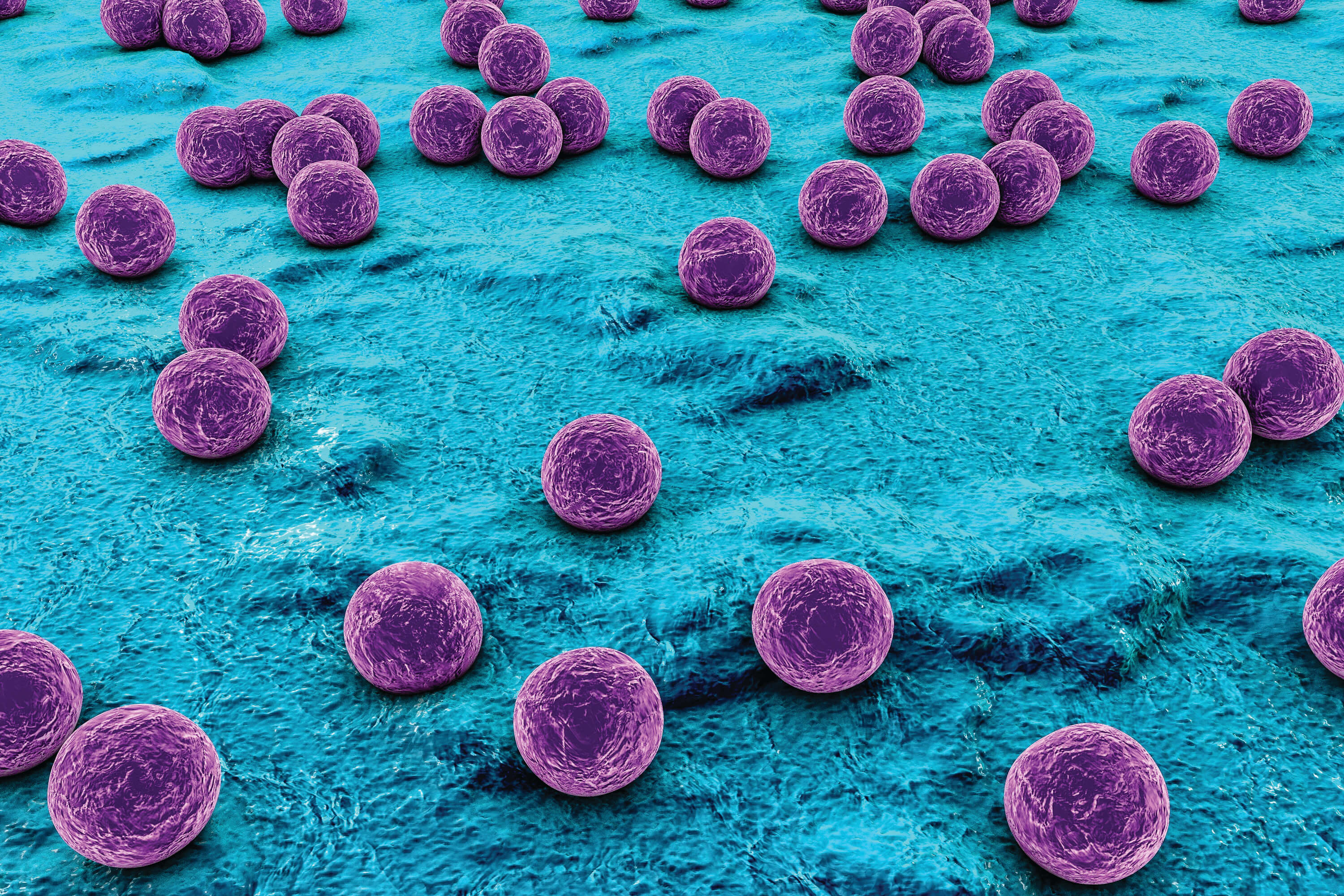Prevention and Control of a Staphylococcus Aureus Infection
An overview of Staphylococcus aureus: a gram positive bacteria
What is Staphylococcus aureus?
Staphylococcus aureus, is a species of Gram-positive spherical bacteria that commonly causes surgical and skin infections, bacteremia (bacteria in the blood) and food poisoning. It’s a ubiquitous microorganism, and can be found on the skin of warm blooded animals. 20 different species of the Staphylococcus genus have been recognized.
The presence of Staphylococcus aureus is tested to check contamination during processing food, as well as contamination after processing or cooking. Staphylococcus aureus is of particular importance in the pharmaceutical and healthcare industry due to its ability to spread contamination.
This article gives an overview of :
● The Staphylococcus aureus bacteria
● How S. aureus is transmitted
● How S. aureus can be detected, prevented and controlled
● The risks of S. aureus for patients
● Treating S. aureus
● Industries affected by S. aureus
● bioMérieux’s products and solutions for detecting and preventing S. aureus
Prevention, Detection and Treatment
How is the Staphylococcus aureus transmitted?
S. aureus is a prevalent skin organism with an estimated 25% of people being long-term carriers. Due to its presence on the skin, it can be a major cause of contamination in pharmaceutical products due to improper handling or poor aseptic processes and protocols. It can be transmitted by a number of means, for example via air droplets or aerosols, direct contact with objects that are contaminated (food, water, inanimate objects) or bites.
How can Staphylococcus aureus be detected, prevented and controlled?
Staphylococcus aureus is associated with healthcare-related infections. Its diagnosis is based on performing microbial detection and identification tests within bacterial colonies. A Staphylococcus aureus infection can be prevented and controlled by:
● Practicing good hand hygiene
● Hygienic conditions for medical procedures and appropriate use of antimicrobial drugs
● Proper environmental control methods, including the regular monitoring of air, water and surfaces
● Stringent cleaning and disinfection of equipment and environments
● In clinical environments, isolating patients when appropriate
● Close monitoring of at-risk patients and populations
How can the presence of Staphylococcus aureus be detected in pharmaceutical products?
The presence of microorganisms such as Staphylococcus aureus can be identified through microbiological detection procedures. bioMerieux has developed automated detection solutions such as SCANRDI and BACT ALERT that can be used to detect bacteria, yeast and mold in food and pharmaceutical products.
How can Staphylococcus aureus be controlled in the Food and Pharmaceutical industry?
Industry control guidelines (or control measures) provide recommendations on how best to effectively prevent and control a Staphylococcus aureus infection. The list of recommendations provided by the FDA and GMP guidelines should be followed.
What are the risks of Staphylococcus aureus to the patient?
While Staphylococcus aureus is usually harmless on the skin, once it is introduced into the bloodstream, it can cause life threatening illnesses. Staphylococcus aureus is a major cause of sepsis when introduced into the body via implants, surgical incisions and injectable medicines. Certain strains of Staphylococcus aureus are a particular problem in healthcare as they have developed antibiotic resistance.
As a result, pharmaceutical systems and monitoring should be designed to prevent and detect any contamination. Remedial action for consistent contamination with a skin organism such as Staphylococcus aureus typically involves retraining operators to improve aseptic techniques or additional process improvement, in order to reduce human involvement or contact.
What is the treatment for Staphylococcus aureus contamination?
A Staphylococcus aureus infection is usually treated with appropriate antimicrobial methods, such as removing the temporary medical devices (such as catheters) if possible, and therapeutic monitoring to stop bacterial growth as early as possible. Antibiotics may also be implemented.
Key Figures
● Staphylococcus aureus is present in the nose of about 30% of healthy adults and on the skin of about 20% of people.
● One of the most common causes of hospital acquired infections
● One of the five most common causes of infection after injury or surgery
● Certain strains of Staphylococcus aureus can be antibiotic resistant.
What common industries are affected by Staphylococcus aureus?
The industries affected by Staphylococcus aureus are:
● Food safety and animal health
● Non-sterile Pharma & Personal Care
bioMérieux Solutions
CULTURE MEDIA
Culture can be used for cells and microorganisms sample growth in laboratories. Reliable culture media solutions are an important part of microbiology testing, safeguarding pharmaceutical products from contamination whilst helping to protect patients and contributing to public health in general.
BIOBALL® Standardized Strains
BIOBALL was developed as a water soluble solution for growth promotion testing, sterility assurance testing and antimicrobial effectiveness testing. They come with a variety of adaptable solutions that enhance pathogen detection speed and accuracy.
IDENTIFICATION
Our pathogen identification range includes solutions such as API®, VITEK® MS, VITEK® 2 COMPACT, and VITEK® EXPRESS which are rapid identification methods. Thank to state of the art technology, precise results can be achieved in minutes.
DETECTION
SCANRDI® and BACTALERT® are pathogen detection solutions for the pharmaceutical industry. They greatly increase the operational efficiency, both for faster release and in-process control purposes, from raw material to finished product. Above all, this contributes increasing patient safety by getting an early access to the therapy




